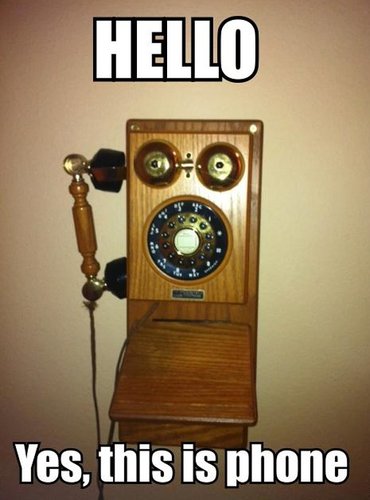A Phone Without a Phone
The spectre of a Facebook phone is upon us. A new phone that won’t be tied to hardware; a phone that is simply collection of interconnected apps that combined serve the basic function of a phone. A phone created by Facebook, but hardware independent; like a spectre, the physical shape will differ depending on the encounter. This experience has been purchased piece by piece for billions of dollars, as much a phone without a phone as a Frankenstein monster made from mergers and acqui-hires that lays waiting on the operating table for lightning to strike. All that’s missing is a lighting bolt – the user interface – to energize these pieces into the experience of a phone, a phone by Facebook.

The smartphone began as the pocket computer/PDA, a tool used by deal-making businessmen for the production of capital. An address book, a calendar, and a calculator; some of the standard features that have come from the corporate officer’s desk. But as the smartphone has transformed from a tool of capital production to a tool of social consumption over the past decade, other features, such as messaging, are now a required part of the smartphone idea.
Three kinds of messaging take place on a phone: SMS, e-mail, and app-to-app. Initially pay-per text, SMS messaging was introduced in 1992 and became popular late 90s, thanks to cell networks allowing cross-network texts. SMS messaging helped drive the market for “dumb” phones, positioning them as social, rather than business, tools.
Mobile e-mail took off in the late 90s as well, with BlackBerry – a phone seemingly built for e-mail – becoming the dominant smartphone of the petty bourgeoisie.
The third and most recent form of messaging, app-to-app messaging, is free, worldwide text and picture messaging as exemplified by BlackBerry Messenger (BBM). BlackBerry’s former hegemony of the market is thanks in no small part to BBM, enabling instant communication in places that had never had it before (due to a myriad of factors: cell phone network restrictions, poor internet, long distance, etc).
The smartphone’s transformation from a tool of capital production to a tool of social consumption (and paradoxically – a means of alienation), began when smartphone’s hardware changed to replace consumer electronic devices, causing massive market disruption. The iPhone helped eliminate the mass market for personal music players, people tired of carrying both an mp3 player and a cell phone bought the iPhone to carry just one device. Once smartphone cameras were introduced, digital camera makers were forced to adapt to a changing market or die.
Back in 2013, Silicon Valley was rife with rumors of a Facebook phone, culminating in the release of Facebook Home, a sort of skin for a Samsung or HTC Android phone. The project was not a success and Facebook Home was largely abandoned by the media. However, the application continued to be updated.
As with all tools, success depends on the user interface. While having a mediocre user interface will not break a product, having a bad one will (Windows 8). Conversely, having a stellar one will drive sales (iPhone).
Facebook Home, I believe, has become sort of a skunk-works for exploring what a totally unified user interface by Facebook would be like. For example, an interface by Facebook has circles around people’s heads:
] Facebook Home Chat Heads (4/2013) [[Business Insider](http://www.businessinsider.com/facebook-home-photos-2013-4?op=1)]](/images/facebook-home.jpg) Facebook Home Chat Heads (4/2013) [Business Insider]
Facebook Home Chat Heads (4/2013) [Business Insider]
] Update to Facebook Messenger (10/2013) [[The Verge](http://www.theverge.com/2013/10/29/5041976/facebook-revamps-messenger-for-ios-and-android)]](/images/facebook-messenger-heads.jpg) Update to Facebook Messenger (10/2013) [The Verge]
Update to Facebook Messenger (10/2013) [The Verge]
] Update to Instagram (3/2014) [[The Verge](http://www.theverge.com/2014/3/11/5496350/instagram-for-android-5-1-screenshots)]](/images/instagram-update.jpg) Update to Instagram (3/2014) [The Verge]
Update to Instagram (3/2014) [The Verge]
Maybe in the future, WhatsApp will have some stickers as part of the interface by Facebook:
] Stickers in Facebook Messenger [[Endgadget](http://www.engadget.com/2013/04/24/facebook-messenger-android-stickers/)]](/images/facebook-messenger.jpg) Stickers in Facebook Messenger [Endgadget]
Stickers in Facebook Messenger [Endgadget]
This is where the spectre of a Facebook phone, a grotesque techno-monster of interconnected apps that owns all methods of communication, comes in. Facebook has all the pieces to build their own phone (without a phone):
- Address Book (Facebook)
- Messaging (WhatsApp and FB Messenger)
- Calls (Bobsled)
- Calendar (FB Events)
- Camera (Instagram)
- Web Browser
A caveat: T-Mobile Bobsled seems to be a one-off event, almost like a proof-of-concept. Facebook Events is not being actively developed in the skunk works of Facebook Home. I’m also not sure if owning a web browser is going to beneficial (in the long run) to the success of a future Facebook phone.
Let’s have a thought experiment: Facebook capitalizes on this idea – a phone without a phone – to release an app that can do everything a smartphone does, a Facebook Home that works in the way Silicon Valley first imagined, yet at the same time makes your phone into essentially a dumb terminal for accessing Facebook-owned technology. The app is built to run on any hardware and priced similar to Kindle Special Offers; the hardware free or cheap, but the end user would be shown ads. You would still have a smartphone, you would just do everything through Facebook.
In exchange for providing a cheap phone, Facebook would use this device to dominate location-based advertising, gathering data to inject ads into daily life.
So the spectre of a Facebook phone, a phone created by the world’s phonebook, is beginning to appear before us. This spectre can either become real and lead a new frontier for growth, or this moment will be remembered as a missed opportunity twenty years down the road.